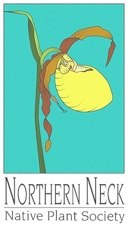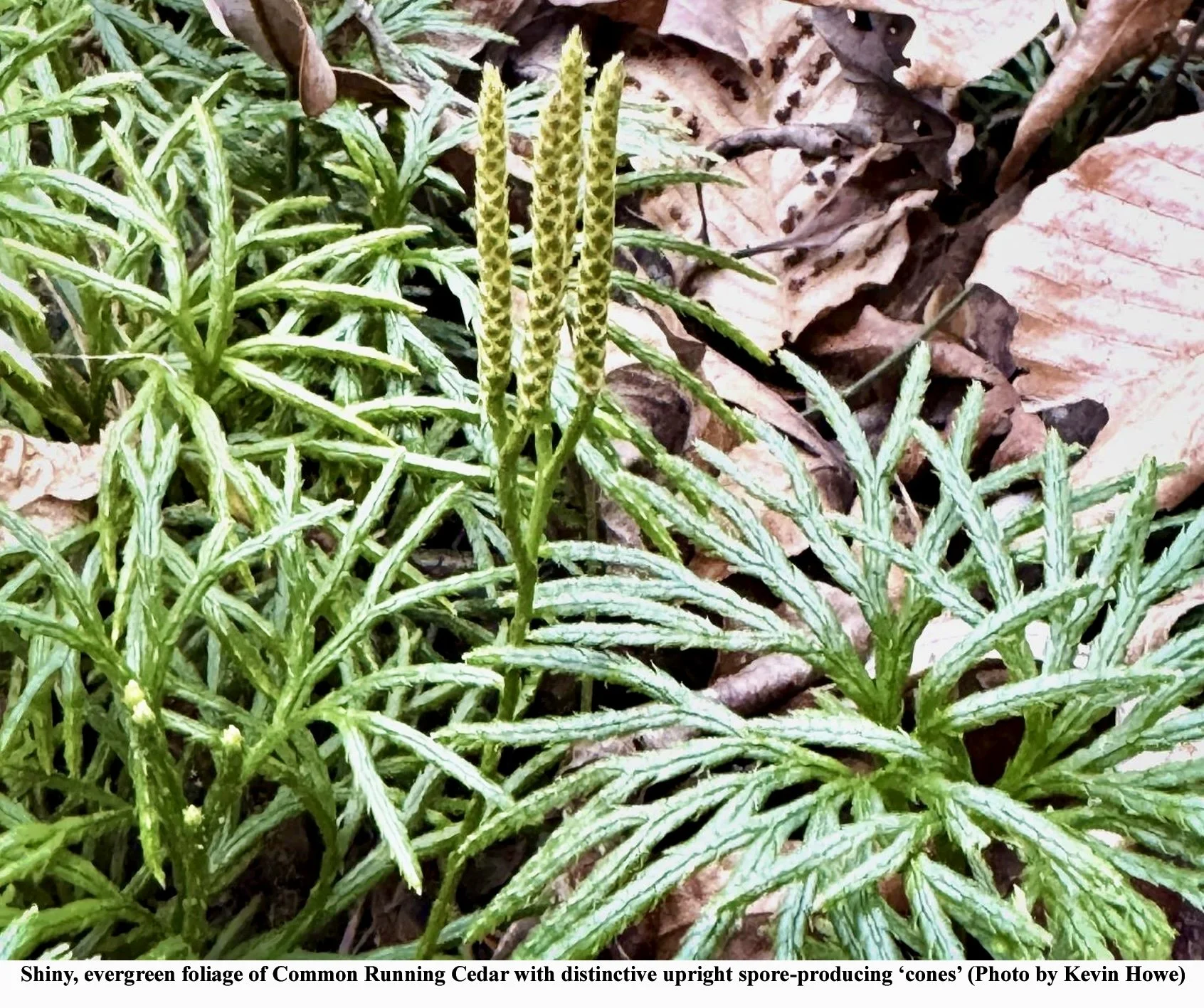Plant of the Month January 2025: Common Running-cedar
Common Running-cedar, Diphasiastrum digitatum
2025 January Plant of the Month
Northern Neck Chapter of the Virginia Native Plant Society
By Betsy Washington
One of my favorite plants during winter walks in the woods is the Common Running-cedar. This lovely but distinctive evergreen plant is common across Virginia in moist to dry acidic forests, especially in disturbed or successional forests with mixed pines, oaks or tulip poplars. It belongs to a group of small primitive vascular plants known as Clubmosses that stretch way back in the fossil record. At one time, these were large and formed huge forests that are the basis of many of our coal deposits. Common Running cedar is the most widespread of the 11 Clubmoss species in Virginia and is known by various common names besides Common Running-cedar including Southern Running Cedar, Running Pine, Fan Clubmoss, Turkeyfoot and more. Despite the common names, these diminutive plants are neither cedars nor pines but are so named because they do resemble miniature cedar trees (especially Atlantic White Cedar) with their short upright stems rising only 4 – 8” and flattened branches spreading out in a fan-like pattern, giving rise to the common name Fan Clubmoss. Each branch is covered with four rows of dark green, shiny, scale-like leaves that are pressed tightly against the stems. These short stems are connected by long runners that trail along the surface of the ground often hidden under the leaf litter. Short aerial stems emerge every foot or so. Over time Common Running Cedar can form extensive vegetative colonies that make an exceedingly beautiful evergreen groundcover with the shiny dark green foliage and extraordinary texture that light up our winter woodlands.
As mentioned, Clubmosses are among our oldest terrestrial plants and evolved about 410 million years ago. Unlike mosses which they superficially resemble because of their low stature, clubmosses have roots and stems with a vascular system (phloem and xylem) that transports water and nutrients like their ancient fern relatives. In fact, back about 300 million years ago (Carboniferous Age), Clubmosses grew as trees to nearly 100’ in height in the great Coal Swamps. Today Clubmosses exist as low ground-covering perennials yet are still highly successful despite wild fluctuations in Earth’s climate through the ages. Clubmosses reproduce by spores but with complicated reproductive cycles that often take years to complete. The “club” in the common name, Clubmosses, refers to the slender upright candle-like cones (technically called strobili) that are produced on branched stems rising above the foliage like little candelabras. These contain the spore producing factories
(sporangia) that release enormous amounts of spores in fall. The tiny spores are dispersed by wind and rain and are soon covered in a snug blanket of fallen leaves. The spores germinate to form a small flat stage known as a gametophyte which persist for years nestled under the leaf litter unable to photosynthesize and survive on its own. Instead, it must be lucky enough to land near the right but necessary fungal partner that will supply it with water and nutrients for a reported 8 to 20 years until the sexual cycle is complete and the photosynthesizing green plants that we see in the woodlands matures. Because of their incredibly slow growth and complicated reproductive cycles, Clubmosses are nearly impossible to transplant and grow in gardens and should never be collected from the wild.
Most Clubmosses have a long and fascinating history of use by humans. The oily spores (known as lycopodium powder or Dragon’s Breath and still available for sale) are highly flammable and give off a dramatic flash of light when lit. Native Americans threw spores into fires during ceremonies to create a dramatic flash. More recently the spores were used in early flash photography, early fireworks and are used even today in stage productions and magic shows. The spores and some leaves have been found to have strong antioxidant and antifungal properties and have been widely used medicinally to treat a variety of illnesses including digestive issues, diarrhea, urinary tract infections, headaches, skin ailments, inflammation and joint pain. The spores also totally repel water and have been used to treat and dry skin rashes and baby bottoms. Most herbivores avoid the foliage which contains toxins making it unpalatable, however Clubmosses provide nesting shelter to ground nesting birds and other small wildlife, but our knowledge is incomplete.
Unfortunately, great quantities of Clubmosses have been collected for holiday decorations. The shallow-rooted runners and leafy shoots are easily pulled up in great ropes and masses, quickly destroying a colony that may have taken decades or more to grow. In fact, many years ago when my husband


